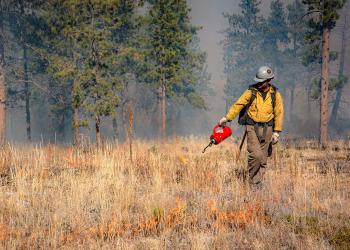Management
Fire management combines elements of fire prevention, fire suppression and fire use. Wildland fire is inevitable in North American ecosystems. Most wildland fire must be suppressed to meet resource and social objectives. Wise use of fire approximates the historical role of fire and enhances long-term wildland values.
Effectively managing forest fuels and dealing with wildfires requires coordination between the Forest Service, Bureau of Land Management, other agencies and communities.
Prescribed Fire

Prescribed fire minimizes hazardous fuels, which reduces fire intensity and the risk of high-severity wildfires. It also minimizes the risk to firefighter and public safety. Additional benefits include improved wildlife habitat and long-term sustainability of healthier ecosystems and the services they provide.
Wildfire

- InciWeb shows active fires near you and is an official source for fire information.
- Our Fire Restrictions page lists restrictions for counties and the forest.
- Check our Alerts page for closures due to wildland and prescribed fire.
- This smoke map from AirNow shows the Air Quality Index from the U.S. Environmental Protection Agency.
Mechanical Treatment

Mechanical treatment of hazardous fuels means reducing the amount of vegetation, which has built up to dangerous levels, or changing the arrangement of these fuels in the environment using equipment such as chainsaws or heavy machinery.



